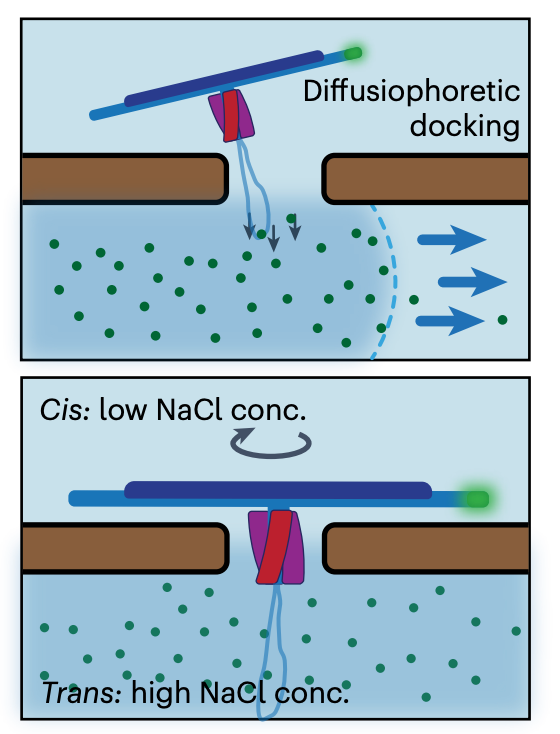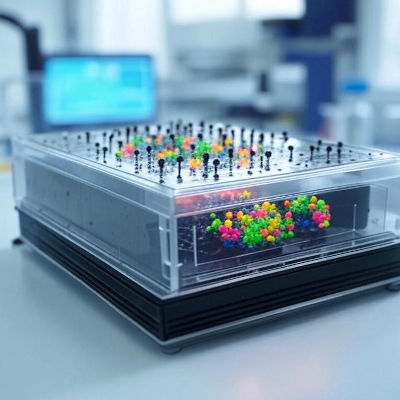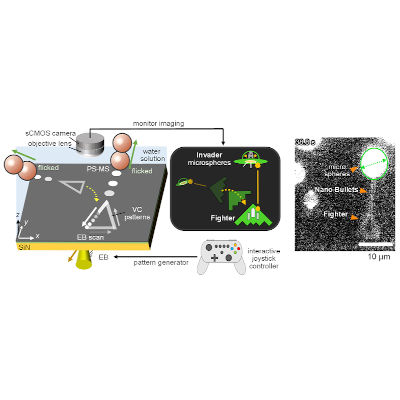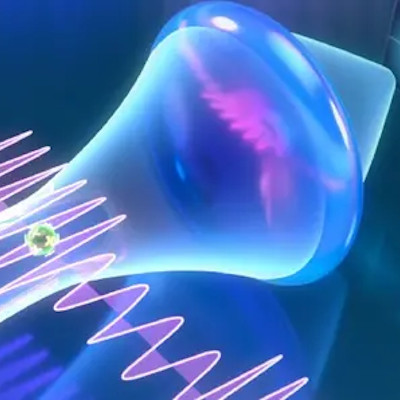Robotics At The Nanoscale: A DNA-Based Electromotor Powered by Nanopore Flow
Jan. 20, 2024.
2 mins. read.
3 Interactions
Could help spark research in building molecular factories to create useful chemicals or medical probes based on molecules inside the bloodstream to detect diseases
Scientists have created the world’s first working nanoscale electromotor. Using a turbine engineered from DNA, it’s powered by hydrodynamic flow inside a nanopore (a nanometer-sized hole in a membrane) of solid-state silicon nitride, according to a paper published in the journal Nature Nanotechnology.
The researchers say the electromotor could help spark research in future applications, such as building molecular factories to create useful chemicals or medical probes based on molecules inside the bloodstream to detect diseases.
Designing at the nanoscale

“Common macroscopic machines become inefficient at the nanoscale,” said study co-author professor Aleksei Aksimentiev, a professor of physics at the University of Illinois at Urbana-Champagne. “We have to develop new principles and physical mechanisms to realize electromotors at the very, very small scales.”
That work was headed by Hendrik Dietz of the Technical University of Munich and Cees Dekker of the Delft University of Technology.
Dietz, a world expert in DNA origami, manipulated DNA molecules to make the tiny motor’s turbine, consisting of 30 double-stranded DNA helices. Decker’s lab work demonstrated how the turbine rotates by applying an electric field.
Aksimentiev’s lab carried out all-atom molecular dynamics simulations on a system of five million atoms to characterize the physical phenomena of how the motor works, using the National Science Foundation (NSF)-funded Frontera, the top academic supercomputer in the U.S. Aksimentiev also had access to the NSF-funded Advanced Cyberinfrastructure Coordination Ecosystem: Services & Support (ACCESS) and to Expanse of the San Diego Supercomputer Center and Anvil of Purdue University.
DNA as an electromotor
The DNA nanoturbine, which can rotate up to a billion revolutions per minute, builds on a previous study that showed that a single DNA helix is the tiniest electromotor that one can build. DNA has emerged as a building material at the nanoscale, according to Aksimentiev. “This new work is the first nanoscale motor where we can control the rotational speed and direction,” he said.
“In the future, we might be able to synthetize a molecule using the new nanoscale electromotor, or we can could use it to as an element of a bigger molecular factory, where things are moved around, he added. “Or we could imagine it as a vehicle for soft propulsion, where synthetic systems can go into a bloodstream and probe molecules or cells, one at a time.”
In the movie Fantastic Voyage, a team of Americans in a nuclear submarine is shrunk and injected into a scientist’s body to quickly fix a blood clot. Aksimentiev said something like this could actually happen (except for the miniature people part).
Citation: Shi, X., Pumm, AK., Maffeo, C. et al. A DNA turbine powered by a transmembrane potential across a nanopore. Nat. Nanotechnol. (2023). https://doi.org/10.1038/s41565-023-01527-8 (open-access)
Let us know your thoughts! Sign up for a Mindplex account now, join our Telegram, or follow us on Twitter.


.png)

.png)


.png)






0 Comments
0 thoughts on “Robotics At The Nanoscale: A DNA-Based Electromotor Powered by Nanopore Flow”